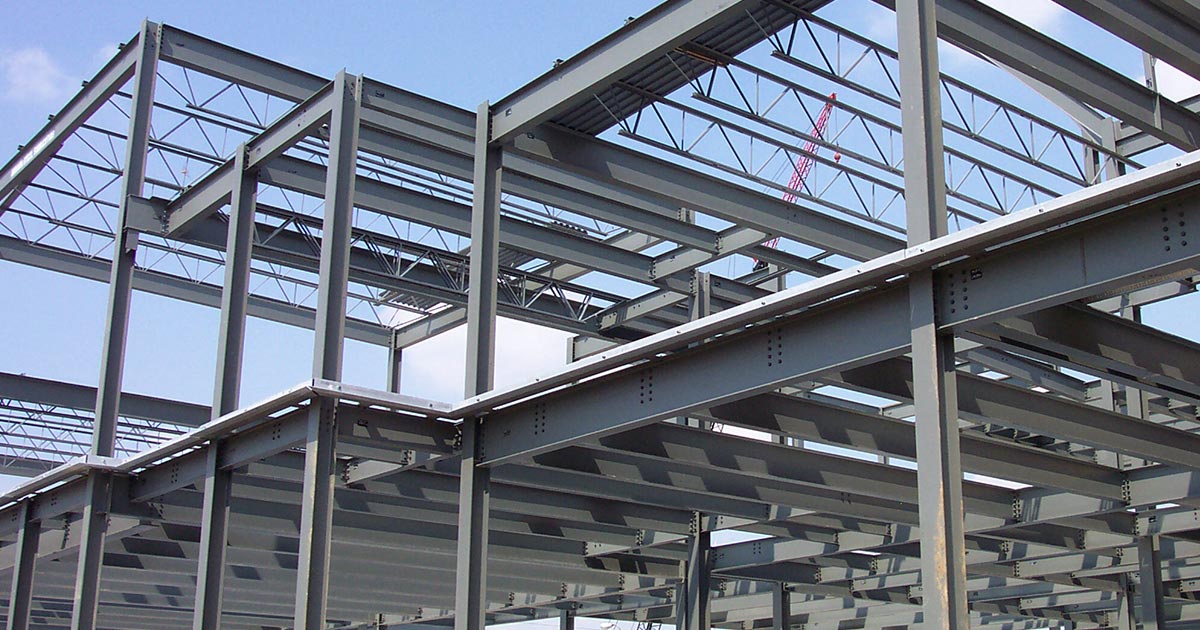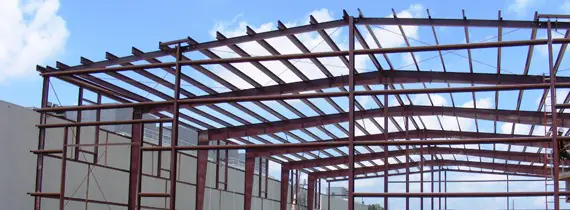Steel Structure Building Wind Resistance: A Comprehensive Guide
Learn how steel structure buildings are designed for wind resistance. A complete guide on wind load calculations and types of wind forces.
Steel structure buildings have become a popular choice in modern construction due to their strength and flexibility. However, one of the main challenges in designing these buildings is ensuring their resistance to wind loads.
This article will delve deep into how steel structure buildings are designed for wind resistance, including design techniques, wind load calculations, and various types of wind forces affecting buildings.
By understanding these crucial aspects, engineers and architects can create steel structure buildings that are not only strong and efficient but also safe and durable in facing extreme wind conditions.
1. How are Steel Structures Designed for Wind Resistance?
Designing steel structures resistant to wind loads is a complex process that requires consideration of various factors. Here are some key aspects in designing steel structures for wind resistance:
- Wind Load Analysis The first step in designing wind-resistant steel structures is conducting a comprehensive wind load analysis. This involves calculating the maximum wind speed likely to occur at the building’s location, considering historical data and climate projections. Engineers use local building standards and codes as guidelines for determining design wind loads.
- Selection of Building Shape and Orientation The shape and orientation of the building have a significant impact on its wind resistance. Buildings with aerodynamic shapes tend to perform better in resisting wind loads. Engineers often choose designs that minimize surfaces directly exposed to wind, such as rounded shapes or blunt angles.
- Bracing and Stiffening Systems Steel structures are designed with strong bracing and stiffening systems to effectively distribute wind loads. This includes the use of interconnected beams and columns, as well as diagonal bracing systems that increase structural rigidity.
- Strong Connections Connections between steel structural elements must be carefully designed to withstand tensile and shear forces caused by wind loads. Modern welding techniques and high-strength bolt systems are used to ensure connection integrity.
- Flexibility and Ductility Wind-resistant steel structures must have a certain level of flexibility to absorb wind energy without structural damage. Designs that allow for slight movement or deflection can help reduce stress on the structure.
- Use of High-Quality Materials The selection of high-quality steel with appropriate strength and ductility is crucial. Materials used must meet industry standards and have proper certification.
- Computer Simulation and Testing The use of advanced simulation software allows engineers to model the behavior of steel structures in various wind scenarios. Additionally, scale model testing in wind tunnels can provide valuable additional data.
- Strong Foundation Design The building’s foundation must be designed to resist overturning and shear forces caused by wind loads. This may involve the use of deep piles or wide foundations that distribute loads over a larger area.
- Safe Roof Systems Roofs are often the most vulnerable part to wind damage. Proper roof design, including appropriate slopes and strong tie-down systems, is crucial for wind resistance.
- Consideration of Non-Structural Elements Non-structural elements such as facades, windows, and ventilation systems must also be designed to withstand wind loads. This includes the use of wind-resistant glass and proper fastening systems for external elements.
- Regular Maintenance and Inspection After construction, regular maintenance and inspection are essential to ensure that the steel structure continues to meet wind resistance standards over time.
- Adaptation to Climate Change With climate change, steel structure designs must consider the potential for increased frequency and intensity of storms in the future. This may involve applying additional safety factors in wind load calculations.
By considering all these aspects, engineers can design steel structures that are not only aesthetic and functional but also highly resistant to extreme wind loads. Wind resistance is not just about strength, but also about intelligent design that utilizes principles of aerodynamics and modern structural engineering.

2. The Ultimate Guide To Steel Structure Building Wind Load Calculations
Wind load calculation is a critical component in the design of steel structure buildings. Here is a comprehensive guide on how to perform wind load calculations:
Understanding Wind Load Basics Wind load on buildings is influenced by wind speed, air density, and the geometric characteristics of the building. Wind pressure (p) is generally calculated using the formula:
p = 0.5 × ρ × v²
Where: ρ = air density v = wind speed
Determining Design Wind Speed
- Use historical wind data and wind zone maps from local meteorological agencies.
- Consider return periods (e.g., 50 years or 100 years) according to local building standards.
- Adjust wind speed based on building height and terrain characteristics.
Exposure Factor
- Evaluate surrounding conditions of the building (urban, suburban, or open areas).
- Use appropriate exposure factors to adjust wind speed based on terrain conditions.
Pressure Coefficients
- Determine pressure coefficients for various parts of the building (windward walls, leeward walls, roof).
- Use tables or graphs from applicable building codes.
Total Wind Force Calculation
- Calculate wind force on each surface of the building.
- Sum these forces to obtain the total wind force on the building.
Dynamic Analysis
- For tall or flexible buildings, perform dynamic analysis to account for resonance and oscillation effects.
- Use methods such as spectral analysis or time-history simulation.
Topographic Effects
- Consider local topographic effects such as hills or valleys that can amplify or weaken wind.
Wind Directionality Factor
- Apply wind directionality factors to account for variations in wind strength from different directions.
Wind Loads on Structural Elements
- Calculate wind loads on individual structural elements such as columns, beams, and bracing systems.
Load Combinations
- Combine wind loads with other loads (dead loads, live loads, seismic loads) according to building codes.
Gust Effect Factor Analysis
- For tall buildings, calculate the gust effect factor to account for short-term wind speed fluctuations.
Software Usage
- Utilize structural analysis software for more complex and accurate calculations.
Verification and Validation
- Check calculation results with alternative methods or scale models.
- Compare with industry standards and similar case studies.
Documentation
- Clearly document all assumptions, methods, and calculation results.
Special Considerations
- For unusual building shapes or very exposed locations, consider wind tunnel testing.
Safety Factors
- Apply appropriate safety factors to final calculation results.
Periodic Updates
- Review and update calculations periodically, especially if there are changes in building standards or climate conditions.
By following this guide, engineers can perform comprehensive and accurate wind load calculations for steel structure buildings. Accurate calculations are crucial for ensuring the safety and durability of buildings against extreme wind conditions.

3. Types of Wind Load Forces on Buildings
Understanding the various types of wind load forces acting on buildings is crucial in designing wind-resistant steel structures. Here’s an explanation of the main types of wind load forces:
Direct Pressure Force
- This is the most common and easily understood force.
- Occurs when wind directly hits the building surface.
- Its intensity depends on wind speed and the area of the impacted surface.
- Usually strongest on the windward side of the building.
Suction Force
- Formed on the side of the building opposite to the wind direction (leeward side) and on the roof.
- Caused by pressure differences that occur when wind flows around the building.
- Can cause a “lifting” effect on roofs or facades.
Shear Force
- Occurs parallel to the building surface.
- Especially important for tall buildings and slender structures.
- Can cause vibration or oscillation in buildings.
Torsional Force
- Caused by non-uniform distribution of wind pressure around the building.
- Can cause buildings to rotate or vibrate torsionally.
- Very important to consider for buildings with asymmetric shapes.
Fluctuation Force (Gust Forces)
- Caused by rapid and brief changes in wind speed.
- Can cause additional dynamic loads on the structure.
- Especially important for tall buildings and flexible structures.
Resonance Force
- Occurs when the natural frequency of the building coincides with the frequency of wind fluctuations.
- Can cause significant amplification of vibrations.
- Critical for tall buildings and slender structures.
Vortex Shedding Force
- Formed when wind flows past a building and creates vortices behind it.
- Can cause lateral oscillation in buildings.
- Especially important for tall and slender structures like towers or chimneys.
Aeroelastic Force
- Occurs due to interaction between wind forces and structural deformation.
- Includes phenomena such as flutter and galloping.
- Important for bridges, large roofs, and other flexible structures.
Impact Force from Flying Debris
- Not a direct wind force, but a secondary effect of strong winds.
- Can cause significant local damage.
- Important to consider especially in areas prone to storms or tornadoes.
Wind Force on Additional Elements
- Acts on non-structural elements such as billboards, antennas, or solar panels.
- Can add significant load to the main structure.
Understanding these types of wind load forces allows engineers to design safer and more resistant steel structures. Each type of force requires a different design approach and may be dominant in certain situations. Careful analysis of all these types of forces, along with accurate calculations, is key to creating steel structure buildings that can withstand extreme wind conditions.

4. Conclusion
The wind resistance of steel structure buildings is a crucial aspect in modern design and construction. Through a deep understanding of how to design steel structures for wind resistance, accurate wind load calculations, and knowledge of various types of wind forces, engineers and architects can create buildings that are not only strong but also safe and efficient.
Effective design requires a holistic approach, from selecting the shape and orientation of the building to using appropriate bracing and stiffening systems. Careful wind load calculations, considering factors such as design wind speed, exposure, and topographic effects, are an important step in this process.
Understanding the various types of wind forces acting on buildings allows designers to anticipate and address potential structural challenges. From direct pressure forces to complex aeroelastic effects, each type of force requires a specific design approach.
It’s important to remember that wind resistance is not just about structural strength, but also about flexibility and adaptability. Modern steel structures must be designed not only to withstand static wind loads but also to respond dynamically to fluctuating wind loads.
With technological advancements and a better understanding of wind behavior, the construction industry continues to develop innovative solutions to improve building resilience. The use of advanced computer simulations, wind tunnel testing, and new materials has opened up new opportunities in wind-resistant structural design.
Finally, in the context of global climate change, the importance of wind-resistant design is increasing. Steel structure buildings must be designed not only for current conditions but also to anticipate potential increases in the frequency and intensity of storms in the future.
By combining technical knowledge, design innovation, and awareness of environmental challenges, the construction industry can continue to produce steel structure buildings that not only meet functional and aesthetic needs but also offer optimal resistance and safety against wind forces.


Post Comment